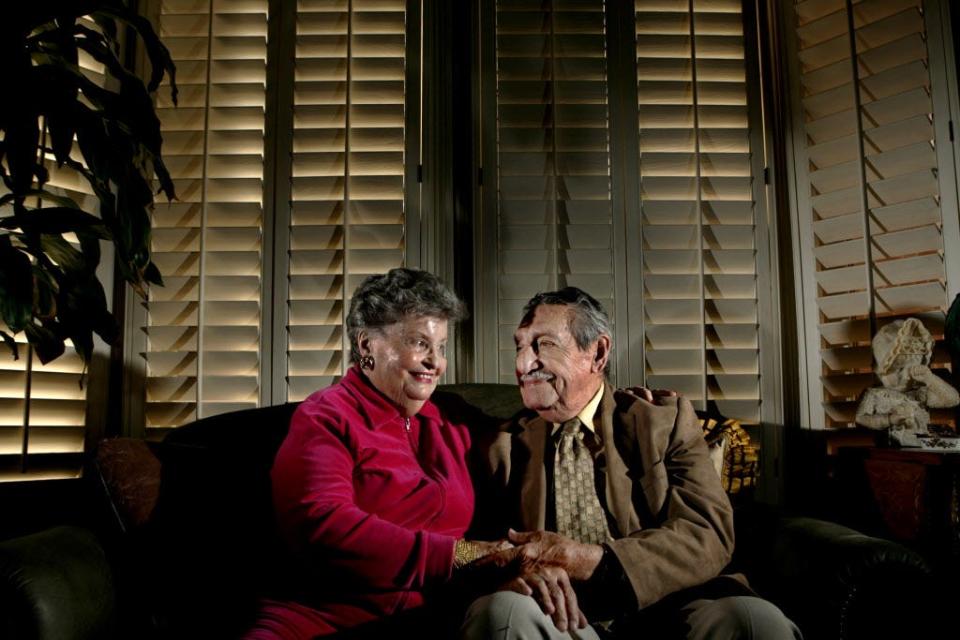Former home of Arizona's only Latino governor returns to family after lawsuit, settlement
The historic Nogales home of Raúl Castro, Arizona’s first and only Latino governor, has been returned to his family after a monthslong lawsuit and a $100,000 settlement was reached with the Arizona Board of Regents.
Briana Ortega, the attorney for the Castro family, announced the change in ownership and settlement on Oct. 27, seven months after the family first filed the lawsuit against the University of Arizona and the Arizona Board of Regents.
“We recognize that this outcome is not only a victory for the family, but also for our border community,” Ortega said in a written statement.
The regents agreed to pay a $100,000 settlement, according to Castro’s daughter, Beth Castro.
For Beth Castro the return of the house symbolizes much more than a change in ownership. It represents a great deal for the surrounding border community that has come to treasure and admire the historic landmark.
“This mostly was about saying, how dare you take advantage of us down here at the border,” Beth Castro said. “It really kind of was David and Goliath.”
The civil lawsuit alleged that the University of Arizona breached its contract with the Castro family and unjustly profited by using the family’s name and image. The March lawsuit was filed in Santa Cruz County Superior Court on behalf of Beth Castro and Don Daley III, Castro’s grandson.
The Castro family entered an agreement with the Board of Regents in 2015 to give the home to the university. In exchange, the university agreed to develop a border studies program housed in the home that would be named after the late governor.
The university intended to convert the house into the Raúl H. and Patricia M. Castro Border Studies and Outreach Center. The space was expected to function as a hub in the border community for faculty research, student training and community partnerships.
In 2018, the University of Arizona’s College of Social and Behavioral Sciences, which led the development plans, received a two-year $350,000 grant from ArtPlace America. The grant was slated to provide funds for a youth empowerment program in the Castro home alongside remodeling expenses for the house.
On Feb. 16, however, the university announced that it would be selling the house. The university was unable to raise enough funds for the restoration and conversion of the house into the center, according to a news release.
On March 27, the house was put up for sale for $300,000.
Beth Castro only knew the home was going up for sale two days before it was listed.
“It’s a terrible crime,” Beth Castro said. “It just shows complete disrespect.”

Net proceeds of the house sale were slated to go to the Raúl H. Castro Scholarship Endowment. Donations raised for renovations would be returned to the donors or also added to the scholarship fund, per each funder’s wishes, per the university.
The university attributed ballooning renovation costs that tripled during the pandemic as part of their reasoning for selling the home.
"In this agreement, the University of Arizona has returned the Castro home to the family," UA spokesperson Pam Scott said in a written statement.
"While we were not able to realize our collective vision for the former home of Governor Raúl H. Castro, the university is proud to offer the Raúl H. Castro Scholarship and to be the home of the Raúl H. Castro Papers honoring the life and legacy of Arizona's first Hispanic Governor."
The house, which was constructed in the early 1900s, was now in a state of “severe disrepair” because of the university’s failure to upkeep the home, according to the lawsuit.
At the time of the lawsuit, there was extensive mold and termite damage with the entire exterior being deemed unsafe for use.
“(UA) literally didn't put a dime in that house for the eight years they had it,” Beth Castro said. “They didn't do one thing with that house.”
Contractors and inspectors are now looking at the house to determine how much damage the house has sustained over the years.
Castro and his wife, Patricia, bought the house in 2003.
Castro was born in Cananea, Sonora, Mexico, and immigrated to the U.S. with his family when he was 2. Castro was a prominent Tucson lawyer before being elected a Pima County Superior Court judge.
Castro served in the 1960s as President Lyndon Johnson's ambassador to El Salvador and Bolivia. He was elected Arizona governor in 1974 and served two years before then-President Jimmy Carter nominated him to become ambassador to Argentina.
He died in 2015 at age 98.
Have a news tip or story idea about the border and its communities? Contact the reporter at [email protected] or connect with him on X, formerly known as Twitter, @joseicastaneda.
This article originally appeared on Arizona Republic: Raúl Castro house: home of AZ's only Latino governor returns to family
